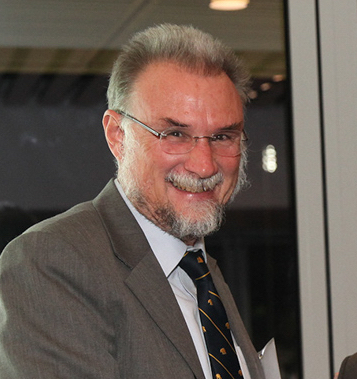Stephen Monismith
Stanford University
Seminar Information
Engineering Building Unit 2 (EBU2)
Room 479 (von Karman-Penner Seminar Room)
Seminar Recording Available: Please contact seminar coordinator, Jake Blair at (j1blair@eng.ucsd.edu)

I will discuss observations of tidally varying wave-forced flows in the reef system on Ofu, American Samoa, a barrier reef and lagoon system that appears “open” at low tide and “closed” at high tide. At high tide, the free surface pressure gradient nearly balances the radiation stress gradient in the depth-integrated momentum equation. At depth, there is an imbalance between these two forces, generating an undertow and flows that turn alongshore and, for some of the time, offshore, behavior similar to rip currents observed on beaches. At low tides, the wave forcing drives purely onshore flows. In general, wave transport (including assumed roller behavior) is important to determining the total net transport. In both cases, the vertical structure of this flow can be predicted with some accuracy using the surf-zone model of Svendsen, albeit with an eddy viscosity that is proportional to the rms wave velocity. While the dynamically closed nature of the lagoon mostly suppresses cross-reef transport, there is always some flow through the lagoon, with the strongest flows occurring at high tides and when the wave forcing is strongest.
Bay Area native Stephen Monismith, the Obayashi Professor in the School of Engineering at Stanford University, received all his degrees (in Civil Engineering ) from UC Berkeley. Following completion of his thesis, he did a postdoc in Western Australia. He has been at Stanford in the Dept of Civil and Environmental Engineering since 1987, and was department chair between 2009 and 2016. He uses field, lab, and computational methods to look at flows with waves and stratification in lakes, estuaries and the nearshore coastal ocean, focusing on mixing and transport processes that are central to ecology, biogeochemistry and environmental management. Through his work on estuarine dynamics, he has been active in San Francisco Bay-Delta issues, including helping to develop the scientific underpinnings of freshwater flow regulations. In recent years, much of his efforts (and travel) have focused on the physics of coral reef flows, with fieldwork and modeling carried out on reefs in the Red Sea, and in nearshore waters of Hawaii, Moorea, Palmyra Atoll, American Samoa, and Palau. He has parallel interests studying the inner shelf flows found near and inside the kelp forests of California. He is a fellow of the American Physical Society and was elected to the National Academy of Engineering in 2022.
